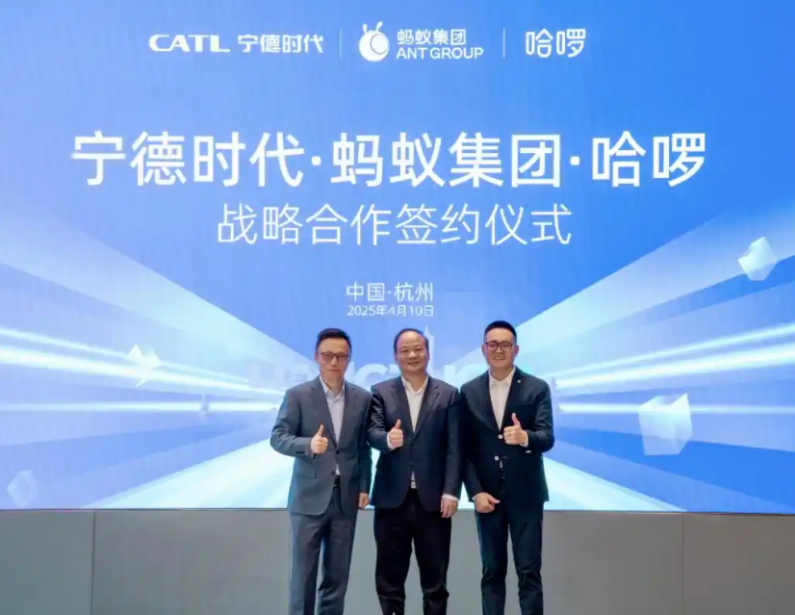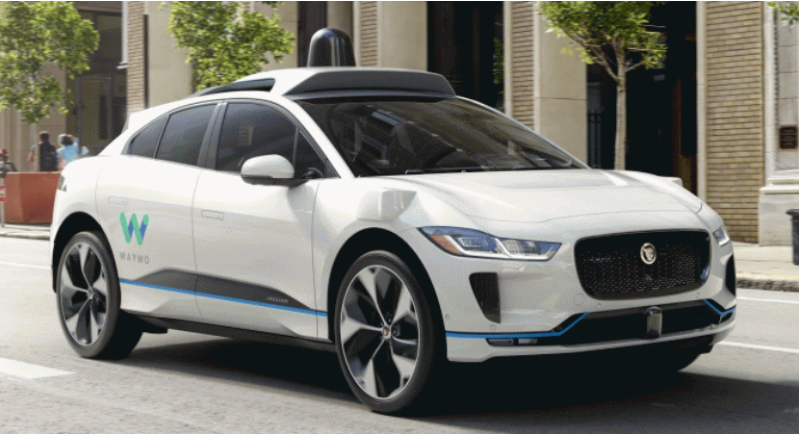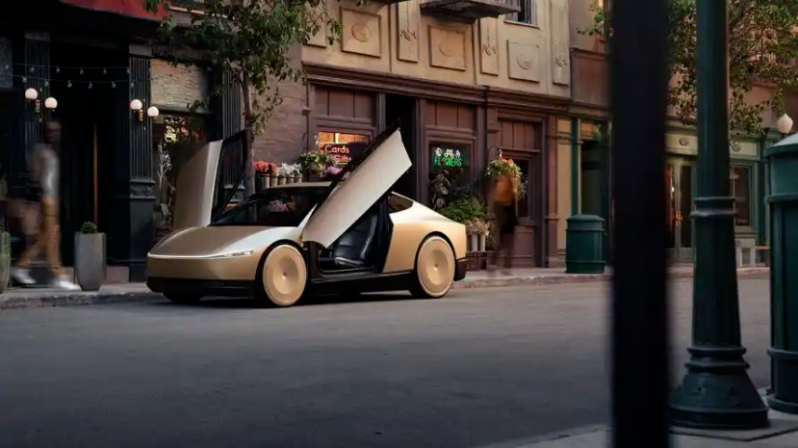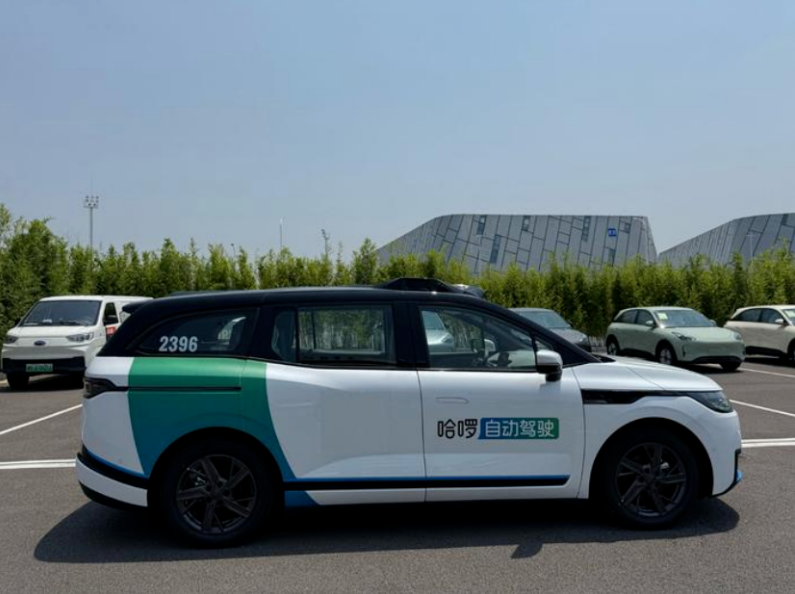According to a recent report by Goldman Sachs, China's Robotaxi market is projected to grow rapidly from $54 million in 2025 to $12 billion by 2030, reaching $47 billion by 2035, with a compound annual growth rate exceeding 96%. This high growth expectation has attracted various players to enter the market. In February of this year, Cao Cao Mobility launched demonstration operations of vehicles equipped with Geely's Qianli Haohan Robotaxi solutions in Suzhou and Hangzhou, with plans to introduce customized L4 Robotaxi models by the end of 2026. SAIC's Xiangdao Mobility announced it has completed over 1.3 billion RMB in Series C financing and is initiating a Hong Kong IPO, aiming to build an L4 Robotaxi fleet in Shanghai, with expectations of reaching 200 vehicles by 2026. Additionally, GAC Group's subsidiary, Qiji Mobility, has already listed on the Hong Kong stock exchange. The latest entrant to the market is Shanghai Zhaofu Intelligent Technology Co., Ltd., established by Hello, Ant Group, and CATL, which has invested over 3 billion RMB to enter the Robotaxi sector. This move parallels Tesla's initiation of Robotaxi trials in the U.S. As a newcomer in the shared mobility space, Hello aims to penetrate the market using a 'scene + technology + energy' triangle strategy, hoping to create a differentiated breakthrough.
From an equity structure perspective, Shanghai Yunan Enterprise Management Consulting Co., Ltd. (Ant Group), Shanghai Junha Network Technology Co., Ltd. (Hello), and Ningbo Meishan Bonded Port Area Wending Investment Co., Ltd. (CATL) hold shares in the venture. Hello has been pushing for the deep application of AI in the mobility sector in recent years, leveraging its travel and lifestyle service platform attributes and user base to accumulate rich experience in scenarios and operations for entering the Robotaxi domain. Ant Group's exploration and research in foundational AI technologies, including large models and reinforcement learning, as well as its experiences in safety and privacy protection, can provide extensive support for Hello's development of autonomous driving services. As a leader in the power battery sector, CATL's battery technology and intelligent skateboard chassis technology support the deep integration of chassis and intelligent driving modules, providing safety and reliability for Robotaxi operations. The collaboration among Hello, Ant Group, and CATL breaks the traditional paradigm where automakers or tech companies make isolated breakthroughs. With 800 million registered users and a shared mobility network covering 360 cities, Hello has accumulated vast amounts of real-world scenario data. Its two-wheeled mobility business services over 10 million rides daily, providing unique long-tail scenario support for Robotaxi algorithm training, including data on user travel patterns and urban heat maps. For instance, Hello's vehicle scheduling and battery management experience can be transferred to Robotaxi fleet operations, lowering marginal costs; Ant Group's technical foundations in AI large models, reinforcement learning, and privacy computing can support the decision-making systems of Robotaxis; and its financial-grade risk control models could optimize vehicle scheduling and safety protocols, while blockchain technology enhances user data security. CATL has achieved hardware standardization through skateboard chassis technology (CIIC), integrating battery, electric drive systems, and autonomous driving modules, reducing vehicle development cycles to 12 months and costs by over 60%.
On an industry level, the Robotaxi sector has experienced a decade of technological accumulation and is expected to reach a commercialization inflection point in 2025. The list of pilot cities for intelligent connected vehicles has been established, with first-tier cities like Beijing, Shanghai, Guangzhou, and Shenzhen accelerating the promotion of autonomous driving policies and orderly opening up scenarios like airports, high-speed rail stations, and city centers, creating a golden window period for the autonomous driving industry. The acceleration of Robotaxi commercialization since 2025 is primarily due to breakthroughs in L4 autonomous driving technology and decreasing costs, where the price of LiDAR has dropped from $100,000 a decade ago to levels in the thousands today, and improvements in computational chip efficiency enable vehicles to handle complex road conditions in real-time. Waymo, a subsidiary of Google, released a research report in May this year, claiming that its fully autonomous vehicles have demonstrated superior performance in avoiding collisions and injuries compared to human drivers after accumulating 56.7 million miles of driving. In the domestic market, continuous policy improvements provide a favorable environment and development space for the growth of Robotaxis, with multiple regions opening up fully unmanned tests, and Shenzhen pioneering legislation for L3-level vehicles, instilling confidence in domestic players.
Entering the market at this time, Hello is likely to ride the wave of rapid industry development and secure a competitive position. For Hello, its shared two-wheeled business has long faced profitability challenges, with cumulative losses nearing 5 billion RMB from 2018 to 2020, making the extension into four-wheeled mobility a necessary choice. Robotaxi not only fills the gap for long-distance travel beyond the 'last mile' but can also reuse data and scenarios to construct a three-dimensional ecosystem of 'two wheels + four wheels + logistics'. Compared to early movers like Didi and LoCar, Hello's ecological synergy model shows unique advantages but also faces differentiated challenges. Didi has built a nationwide road network database based on its 550 million users and daily 45 million orders of travel data, but its business is focused on 'people-vehicle' matching and lacks a deep understanding of unstructured scenarios (like internal roads of residential areas and construction zones). Hello, on the other hand, has penetrated urban capillaries through its two-wheeled mobility, accumulating a wealth of low-speed, high-density scenario data that can complement the shortcomings of autonomous driving's long-tail scenarios. Unlike Baidu's fully self-developed model with LoCar, Hello has chosen a light-asset path. Baidu's extensive self-development has led to single-vehicle costs exceeding 800,000 RMB and the need to build its own charging network; meanwhile, Hello achieves hardware standardization through CATL's skateboard chassis and leverages Ant's AI capabilities to reduce algorithm development costs, allowing for rapid expansion and market capture. Although Tesla leads in global layout, the adaptability of its FSD technology to the Chinese market remains in question. Hello, with its understanding of local scenarios (such as managing tidal commuting and mixed traffic with non-motorized vehicles), can optimize algorithms accordingly, creating differentiated competitive advantages.
However, it is important to note that despite the potential of the ecological synergy model, Hello still needs to overcome three major obstacles: technology, policy, and profitability. The Robotaxi sector has attracted numerous players. On the automaker side, SAIC's Xiangdao Robotaxi has completed over 330,000 orders and has opened over 48,000 operational points since its launch in 2021, accumulating over 2.5 million kilometers of driving and plans for a fleet of 200 vehicles by 2026 after its Series C funding. Tesla's Robotaxi officially started pilot services in Austin, Texas, on June 22, leveraging its technological assets in electric vehicles and autonomous driving to exert strong market influence. On the technology company side, Baidu's LoCar has been entrenched for years, leading in technical validation and market accumulation, making significant presence in China last year and accelerating its expansion into Southeast Asia; Pony.ai and WeRide have also launched fully autonomous paid operations in cities like Guangzhou and Beijing and are actively expanding overseas. In the mobility platform sector, Didi maintains its leading position due to its data and scale, having accumulated significant user behavior data and established an autonomous driving team years ago. L4-level autonomous driving technology needs to handle extreme scenarios (such as severe weather and sudden accidents), while Hello lacks the historical accumulation necessary for self-developed technologies, and reliance on external partnerships may lead to slower algorithm iterations. Currently, Hello's team consists of only about 100 members, significantly smaller than the thousand-member R&D teams of leading companies, and delayed policy and infrastructure support also restrict its development.
Despite multiple regions opening pilot programs, national regulations have yet to be established, and there are still gray areas in rules related to accident liability and data privacy protection. Additionally, the high-precision maps and 5G-V2X roadside equipment that Robotaxis rely on have not yet become widespread. The lack of a viable profitability model presents another major challenge. In the current operational costs of Robotaxis, vehicle depreciation and manual dispatch account for over 70%. Based on Hello's planned single-vehicle cost of 400,000 RMB, it would require at least 1,200 RMB in daily orders to cover costs, while currently, leading industry players fall short of that with less than a thousand orders per day. It is clear that Hello, in partnership with Ant and CATL, is entering the Robotaxi space as a competition of 'ecological efficiency' and 'technological endurance'. The success of this venture depends on whether they can convert scenario data into algorithmic barriers, compress hardware costs to the commercial threshold, and achieve large-scale implementation within the policy window. Compared to players making isolated breakthroughs, Hello's ecological synergy model may be able to more quickly carve out a market niche, but in the face of pressure from giants like Tesla and Didi, it still needs to find a balance between technological self-development and capital investment. In the future, competition in the Robotaxi industry may shift from a technology race to a comprehensive strength contest involving 'ecological scene capital' integration.
China's Robotaxi Market Expected to Soar to $47 Billion by 2035

Images



Share this post on: